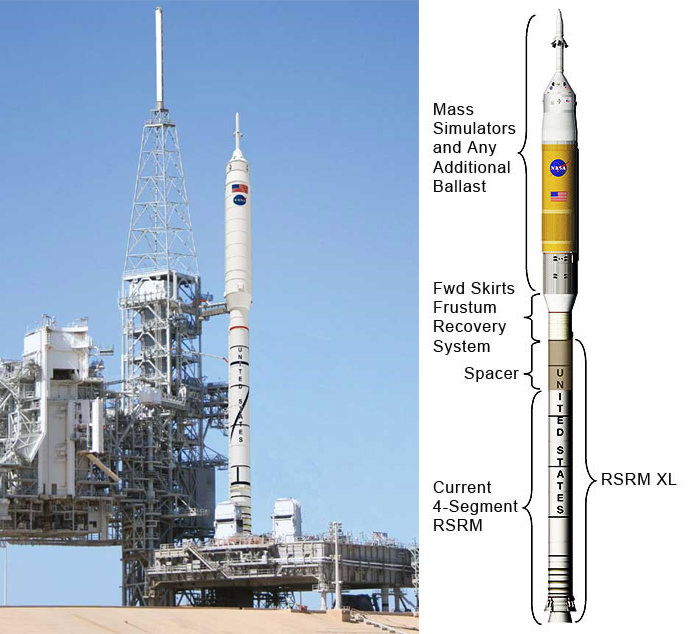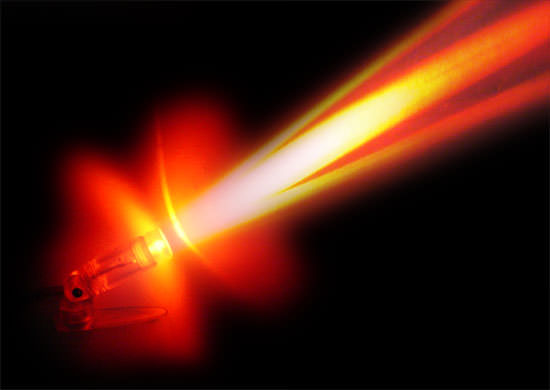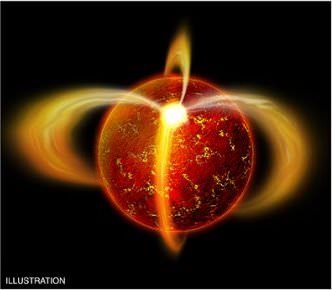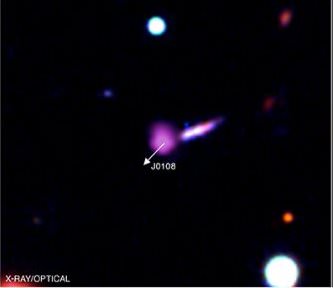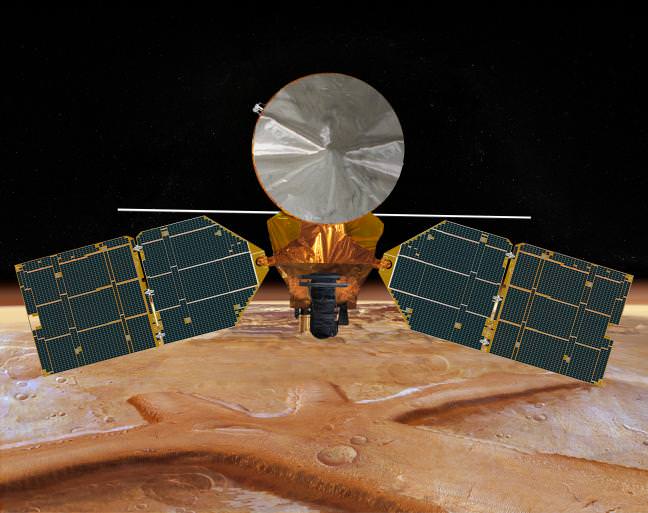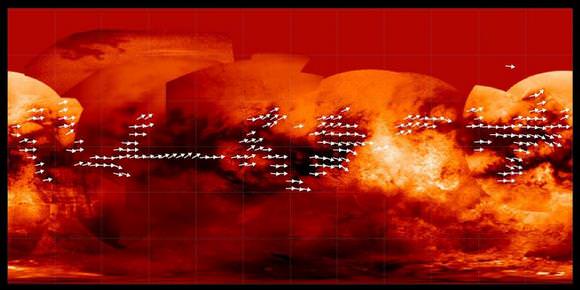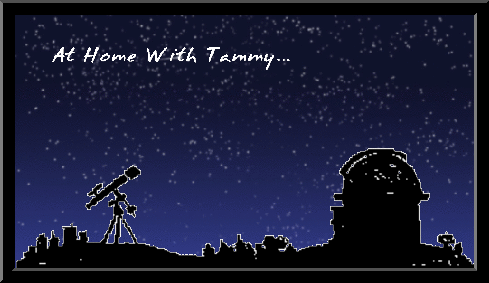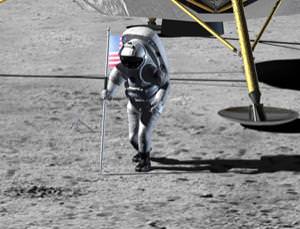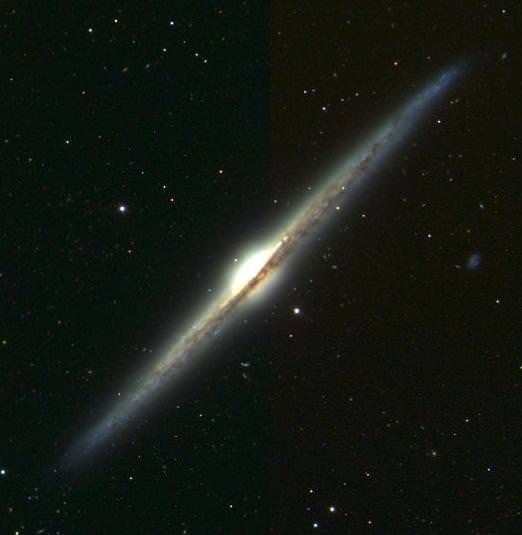Greetings, fellow SkyWatchers! Are you ready for the weekend? Then let’s tackle both fun and serious studies as we take on a bright open star cluster, Herschel 400 objects, lunar subjects, planets, comets and even a galaxy cluster. If you’re ready to learn more about the history behind the observing and have some fun under the stars, then just follow me…
 Friday, February 27, 2009 – Today let’s celebrate the 1897 birth on this date of Bernard Lyot, master of optics. He invented the polariscope, and produced the first solar coronagraph. He also made the first motion pictures of solar prominences. Lyot was an astute observer, and realized that the lunar surface had similar properties to volcanic dust. He didn’t see canals on Mars but observed sandstorms there, as well as atmospheric conditions on other planets. The Lyot filter is well known, and so is his micrometer, a device used to make precise distance measurements, especially those between close double stars. By all accounts a wonderful and generous man, Lyot sadly died of a heart attack while returning from seeing an eclipse.
Friday, February 27, 2009 – Today let’s celebrate the 1897 birth on this date of Bernard Lyot, master of optics. He invented the polariscope, and produced the first solar coronagraph. He also made the first motion pictures of solar prominences. Lyot was an astute observer, and realized that the lunar surface had similar properties to volcanic dust. He didn’t see canals on Mars but observed sandstorms there, as well as atmospheric conditions on other planets. The Lyot filter is well known, and so is his micrometer, a device used to make precise distance measurements, especially those between close double stars. By all accounts a wonderful and generous man, Lyot sadly died of a heart attack while returning from seeing an eclipse.
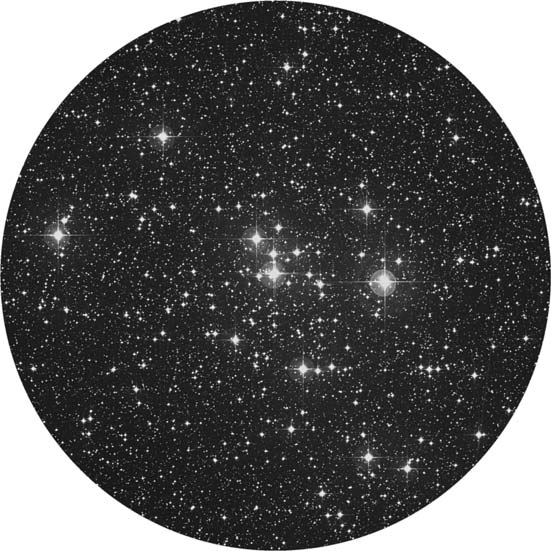
Honor Lyot’s work by studying two open clusters, found about a fist-width north of Xi Puppis. The brighter of the two – M47 (RA 07 36 36 Dec -14 29 00) – is 1,600 light-years away and a glorious object for binoculars. Filled with mixed-magnitude stars that resolve fully to aperture, M47 features the matched-magnitude double star Struve 1211 near its center. For all its bright beauty, this stellar swarm has the most ironic of histories. Probably discovered first by Hodierna but kept secret, it was independently recovered by Charles Messier, but its position was logged incorrectly. Later, it was cataloged by both William and Caroline Herschel. . .and yet again by John Herschel, who said: ‘‘This cluster has not since been observed. It is probably very loose and poor one.’’ Even Dreyer had a hard time nailing it down! Funny, considering it has only been there for 78 million years…
 While M47 is a Herschel object, look just slightly north (about a field of view) to pick up another cluster that borders it, NGC 2423 (RA 07 40 45 Dec -9 09 00). This compressed cluster contains more than two dozen faint stars with a lovely golden binary at its center. By comparing the two clusters telescopically, you are also expanding your own studies by viewing two different types of stellar evolution: M47 is very similar to the Pleiades, while NGC 2423 more closely resembles the Hyades.
While M47 is a Herschel object, look just slightly north (about a field of view) to pick up another cluster that borders it, NGC 2423 (RA 07 40 45 Dec -9 09 00). This compressed cluster contains more than two dozen faint stars with a lovely golden binary at its center. By comparing the two clusters telescopically, you are also expanding your own studies by viewing two different types of stellar evolution: M47 is very similar to the Pleiades, while NGC 2423 more closely resembles the Hyades.
Saturday, February 28, 2009 – If you didn’t notice the beautiful visage of the tender young Moon and Venus last night at sunset, try again tonight. The pair will be even closer! For most observers, Venus will be only slightly more than a degree away from the Moon’s limb. Have you checked Venus’s phase in the telescope lately? Just like our own Moon, the inner planets (Mercury and Venus) have phases. Because they’re inside Earth’s orbital path, we only see a thin crescent when they first emerge from the Sun’s glare, and they become gibbous as they are about to pass behind the Sun from our point of view. That’s also the reason why we only see these two planets either after sunset or before sunrise!
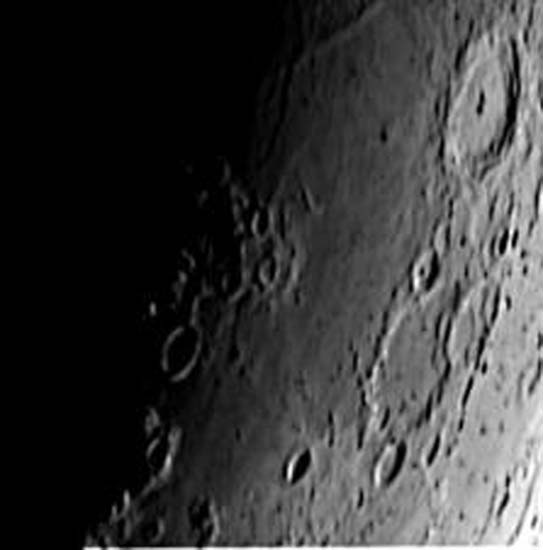
Take a closer look at the slender crescent Moon. It, too, has only just emerged from the Sun’s glare, and now is the time to get a great look at two craters – Langrenus and Vendelinus. If you remember Mare Fecunditatis, you won’t have any trouble spotting Langrenus on its south shore about mid-way along the Moon’s visible limb. It’s a very old crater with an approximate diameter of 132 kilometers, and appears to binoculars as a shallow, bright ring; featuring a central peak. Further south is equally old Vendelinus. Slightly larger and spanning 147 kilometers, it will appear even more shallow – because it is. It lacks a central peak, but telescopes at high power can resolve its few minor interior craters.
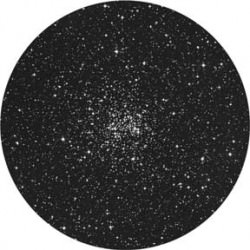 Keep your binoculars or telescopes out for a while after the Moon sets, and let’s head a little less than a fist-width east-southeast of Alpha Monocerotis (RA 08 00 01 Dec -10 46 12) to check out NGC 2506. On a dark night, this nearly 7th magnitude object is one of the most impressive of the Monoceros open star clusters. Caught in a chain of stars, it displays a rich concentration, almost appearing like a globular cluster. NGC 2506 has been used to study old, metal-poor galactic clusters. Evolution has enriched its iron content, and – despite its extreme age – it is still a beauty. Be sure to mark your Hershel ‘‘400’’ notes!
Keep your binoculars or telescopes out for a while after the Moon sets, and let’s head a little less than a fist-width east-southeast of Alpha Monocerotis (RA 08 00 01 Dec -10 46 12) to check out NGC 2506. On a dark night, this nearly 7th magnitude object is one of the most impressive of the Monoceros open star clusters. Caught in a chain of stars, it displays a rich concentration, almost appearing like a globular cluster. NGC 2506 has been used to study old, metal-poor galactic clusters. Evolution has enriched its iron content, and – despite its extreme age – it is still a beauty. Be sure to mark your Hershel ‘‘400’’ notes!
Sunday, March 1, 2009 – In 1966, Venera 3 became the first craft to touch another planet when it impacted Venus on this date. Although communications failed before it could transmit data, it was still a milestone achievement. If you’re out at sunset, be sure to have a look at Venus and say “Spaseba!”
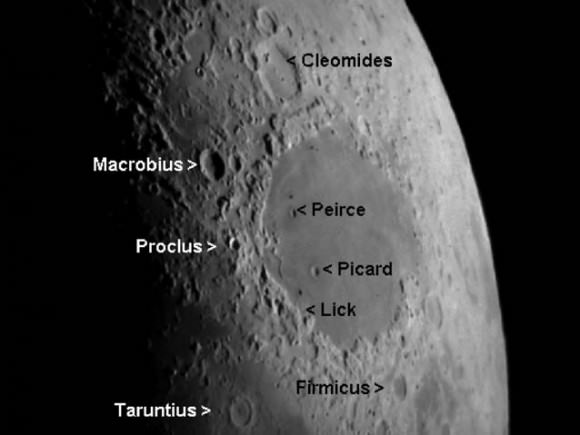
Once you’ve viewed Venus, let’s turn our observations toward tonight’s Moon and begin by identifying some prominent lunar craters around Mare Crisium that can be spotted easily with a small telescope. North you’ll spy Cleomides and at the western edge, Proclus. Near the terminator northwest is Macrobius, and southwest is Taruntius. Power up and identify the small wells of Peirce, Picard, and Lick inside the smooth sands of Crisium. Lather, rinse and repeat… The more often you repeat crater names to yourself (and aloud) the greater the chances are that you’ll retain these names in your memory. Now, let the Moon wester and we’ll go again…
 In 2003, another Deep-Sky Companion book by notable observer and author Stephen O’Meara premiered. Known for his high-quality sketches of Solar System objects and uncanny observing skills, O’Meara was the first to sight Comet Halley in 1985, and sketch the dark spokes in Saturn’s rings (before Voyager had imaged them). Still part of the editorial staff at Sky & Telescope, and a treasured lecturer, let’s take just a moment to congratulate Steve on a lifetime of achievement! (folks? you will never meet a more genuinely kind person and one who treats fellow amateur astronomers with such huge respect. i have met a great many of my astronomy “heroes” over the years and steve-o is most definitely the kind of star i’d like to be some day.)
In 2003, another Deep-Sky Companion book by notable observer and author Stephen O’Meara premiered. Known for his high-quality sketches of Solar System objects and uncanny observing skills, O’Meara was the first to sight Comet Halley in 1985, and sketch the dark spokes in Saturn’s rings (before Voyager had imaged them). Still part of the editorial staff at Sky & Telescope, and a treasured lecturer, let’s take just a moment to congratulate Steve on a lifetime of achievement! (folks? you will never meet a more genuinely kind person and one who treats fellow amateur astronomers with such huge respect. i have met a great many of my astronomy “heroes” over the years and steve-o is most definitely the kind of star i’d like to be some day.)
Are you ready to practice Steve’s powers of observation? Then begin with Comet Lulin – now speeding in the eastern edge of the dim constellation of Cancer. If you have difficulty finding it, look for the large, backwards question mark of the prominent asterism of Leo. The bright star you see that’s the “period” of the question mark is Regulus – and Comet Lulin is a couple of binocular fields west. Once you’ve spied it, try comparing details to what you may have observed of Lulin’s previous behavior and appearance. Is the comet moving faster than when you first began observing it? It the tail longer? Brighter? What direction does it point in? Has the coma become more diffuse or larger? Does the comet display a nucleus? Is the anti-tail still visible? Asking yourself simple questions like these will help you become a far better observer!
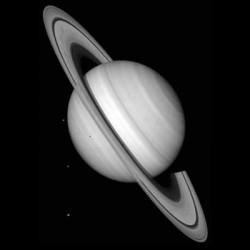 Now wait until Saturn has cleared the horizon murk and let’s take a close look at this fascinating planet. Look for details such as ring shadows on the planet and planet shadows on the rings. Can you see the Casinni Division? How about Saturn’s satellites? Tonight you’ll find Titan leading the way well outside to the west. To the western ring edge, you’ll see Tethys… And clustered together on the eastern ring edge are Rhea, Dione and Enceladus. You won’t need the Hubble Space Telescope to see these kinds of details – just a steady sky and around a 4″ telescope. Take your time and enjoy your studies!
Now wait until Saturn has cleared the horizon murk and let’s take a close look at this fascinating planet. Look for details such as ring shadows on the planet and planet shadows on the rings. Can you see the Casinni Division? How about Saturn’s satellites? Tonight you’ll find Titan leading the way well outside to the west. To the western ring edge, you’ll see Tethys… And clustered together on the eastern ring edge are Rhea, Dione and Enceladus. You won’t need the Hubble Space Telescope to see these kinds of details – just a steady sky and around a 4″ telescope. Take your time and enjoy your studies!
 Ready for some serious studies? Then let’s talk about George Abell, who was born this day in 1927. Abell was responsible for cataloging 2,712 clusters of galaxies from the Palomar sky survey, a task he completed in 1958. Using these plates, Abell proposed that the grouping of such clusters delineated the arrangement of matter in the universe. He developed the luminosity function, which shows the relationship between brightness and the number of members in each cluster, allowing you to infer the cluster’s distance. Abell also discovered planetary nebulae, and developed the theory (along with Peter Goldreich) of their evolution.
Ready for some serious studies? Then let’s talk about George Abell, who was born this day in 1927. Abell was responsible for cataloging 2,712 clusters of galaxies from the Palomar sky survey, a task he completed in 1958. Using these plates, Abell proposed that the grouping of such clusters delineated the arrangement of matter in the universe. He developed the luminosity function, which shows the relationship between brightness and the number of members in each cluster, allowing you to infer the cluster’s distance. Abell also discovered planetary nebulae, and developed the theory (along with Peter Goldreich) of their evolution.
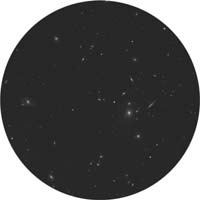 For seasoned observers, wait until the Moon has set and honor Abell by viewing one of his galaxy clusters – Abell 1367, located about a degree southwest of 93 Leonis (RA 11 44 44 Dec +19 41 59). It’s an area of challenging intrigue for a large scope – spanning a degree of sky and containing as many as two dozen small galaxies – a gemstone for the galaxy collector!
For seasoned observers, wait until the Moon has set and honor Abell by viewing one of his galaxy clusters – Abell 1367, located about a degree southwest of 93 Leonis (RA 11 44 44 Dec +19 41 59). It’s an area of challenging intrigue for a large scope – spanning a degree of sky and containing as many as two dozen small galaxies – a gemstone for the galaxy collector!
Until next week? Ask for the Moon… But keep on reaching for the stars!
This week’s awesome images are: Bernard Lyot (public image), M47 and NGC 2423 (Credit: Palomar Observatory, courtesy of Caltech), Langrenus and Vendelinus (Credit: Dave Nash), NGC 2506 (credit – Palomar Observatory, courtesy of Caltech), Crisium area (Credit: Greg Konkel), Stephen James O’Meara (Credit: Sky & Telescope), Saturn & Moons (Credit: NASA), George Abell (Credit: American Institute of Physics), Abell 1367 (Credit: Palomar Observatory, courtesy of Caltech). We thank you so much for sharing the history and mystery with us!


